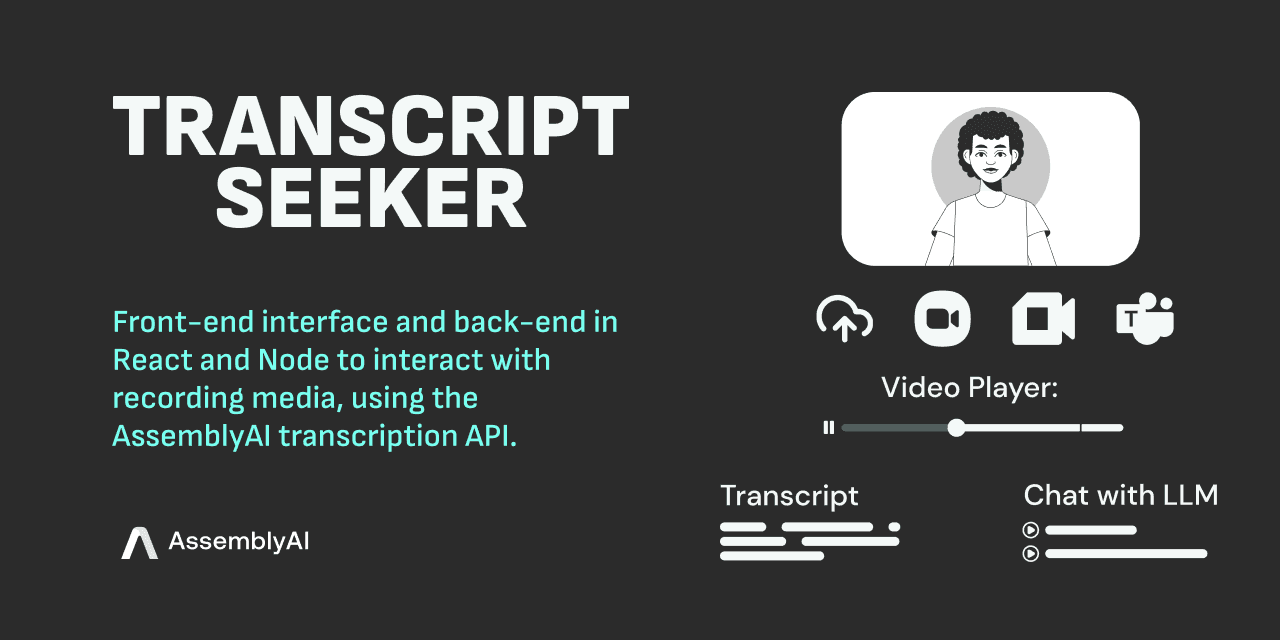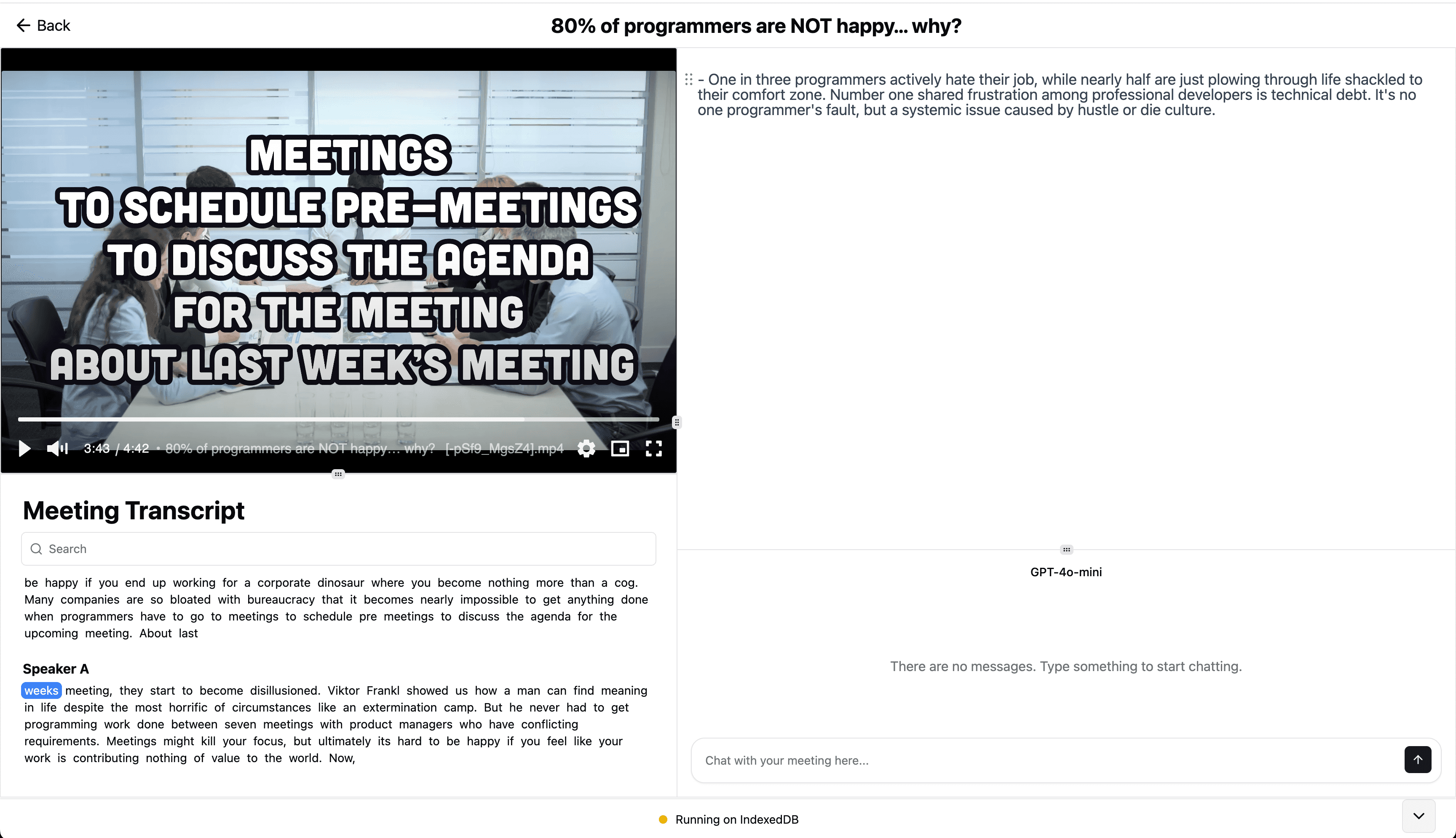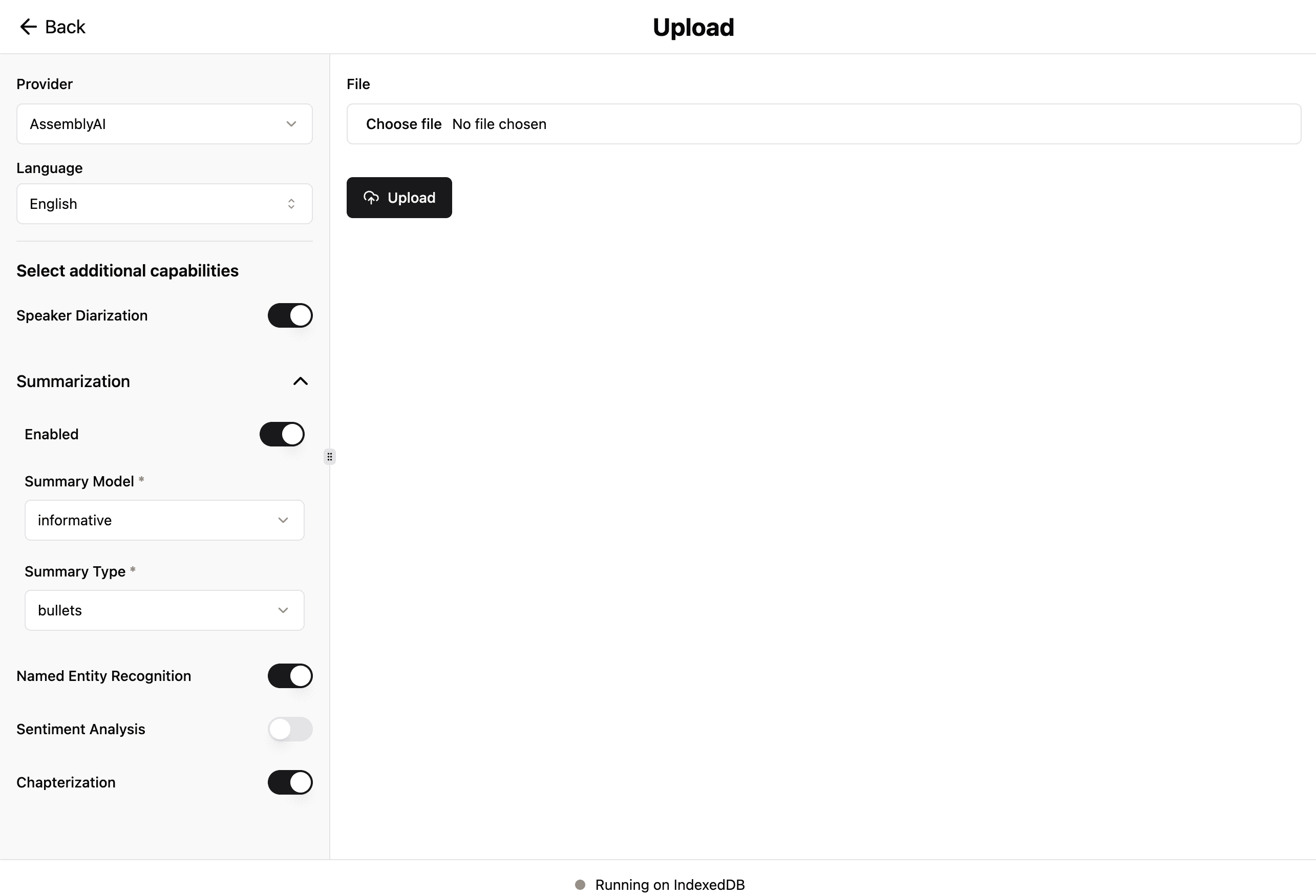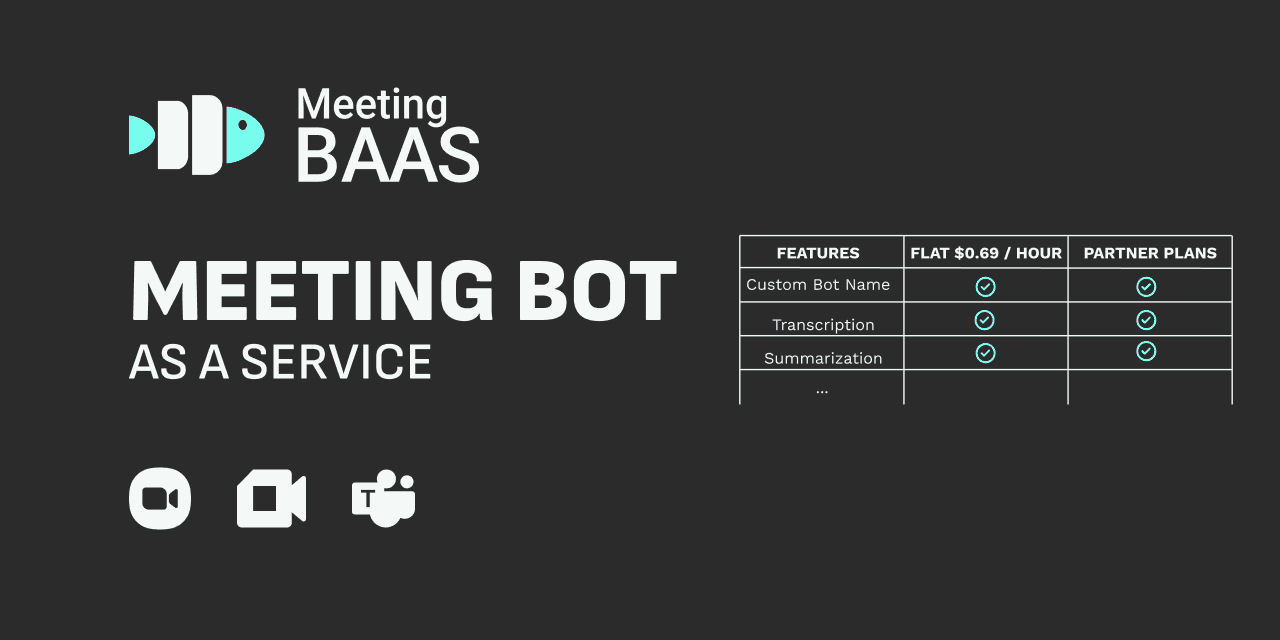
Transcription interface using the AssemblyAI API
Transcription Playground leveraging the AssemblyAI API, with an MIT License
Transcript Seeker integrates with AssemblyAI's transcription API, providing an open-source interface for AssemblyAI's speech-to-text capabilities.
With this integration, you can:
As an open-source project, Transcript Seeker allows for customization and extension of AssemblyAI API integrations.
With this integration, you can:
- Upload audio or video files for transcription using AssemblyAI's API
- View transcripts synchronized with your media
- Navigate content by selecting specific words in the transcript
- Use AssemblyAI's speaker diarization for multi-speaker content
- Access additional API features such as summarization, named entity recognition, and sentiment analysis
As an open-source project, Transcript Seeker allows for customization and extension of AssemblyAI API integrations.

The AssemblyAI API integration in Transcript Seeker includes:
AssemblyAI API options available in the implementation:
This implementation allows developers to modify or extend the AssemblyAI API integration as needed.
- File upload to AssemblyAI's servers
- Transcription initiation with configurable options
- Result polling and retrieval
- Processing and organizing speaker utterances
- Handling of additional features like summarization and entity detection
AssemblyAI API options available in the implementation:
- Speaker labels (diarization)
- Summarization (with customizable model and type)
- Entity detection
- Sentiment analysis
- Auto chapters
This implementation allows developers to modify or extend the AssemblyAI API integration as needed.
View on GitHubimport { z } from 'zod'; export const options = z.object({ speaker_labels: z.boolean().describe('Speaker Diarization').optional(), summarization: z.object({ summarization: z.boolean().describe('Enabled').optional(), summary_model: z.enum(['informative']).default('informative').describe('Summary Model'), summary_type: z.enum(['bullets']).default('bullets').describe('Summary Type'), }), entity_detection: z.boolean().describe('Named Entity Recognition').optional(), sentiment_analysis: z.boolean().describe('Sentiment Analysis').optional(), auto_chapters: z.boolean().describe('Chapterization').optional(), });

To use Transcript Seeker with the AssemblyAI API integration:
Ensure Git, Node.js, and Yarn are installed on your system before running the script.
- Save the script below as run.sh and make it executable:
- Open the application in your browser once the development server starts.
- Navigate to "Settings" and enter your AssemblyAI API key.
- Choose "AssemblyAI" as the transcription service when uploading a file.
chmod +x run.sh ./run.sh
Ensure Git, Node.js, and Yarn are installed on your system before running the script.
View on GitHub#!/bin/bash # 🚀 Quick Start for Transcript Seeker 🚀 # Save this file as run.sh, chmod +x run.sh, and run it # ⚠️ Make sure you have Git, Node.js, and Yarn installed before proceeding! # clone and navigate to the repo git clone https://github.com/Meeting-Baas/transcript-seeker && cd transcript-seeker # Install dependencies echo "🔧 Installing dependencies..." yarn install && yarn install:all || { echo "❌ Error: Failed to install dependencies"; exit 1; } echo "🏗️ Building dependencies..." yarn run build || { echo "❌ Error: Failed to build dependencies"; exit 2; } echo "📄 Copying .env file..." cp .env.example .env || { echo "⚠️ Warning: Failed to copy .env file. You may need to set up environment variables manually."; } echo "🚀 Starting the development server..." cd client && yarn run dev || { echo "❌ Error: Failed to start the development server"; exit 3; }

Resources
Open-Source
Product
PlansFeature ListMeeting Transcription APIMeeting AgentsAI Meeting Assistant APIAPI to Record and Transcribe Video MeetingsMeeting bots with transcriptionMeeting bot API for Google MeetAlternative Recording API for Google MeetAlternatives to Recall AIRecall AI vs Meeting BaaSMeeting bot API for ZoomMeeting bot API for Microsoft Teams